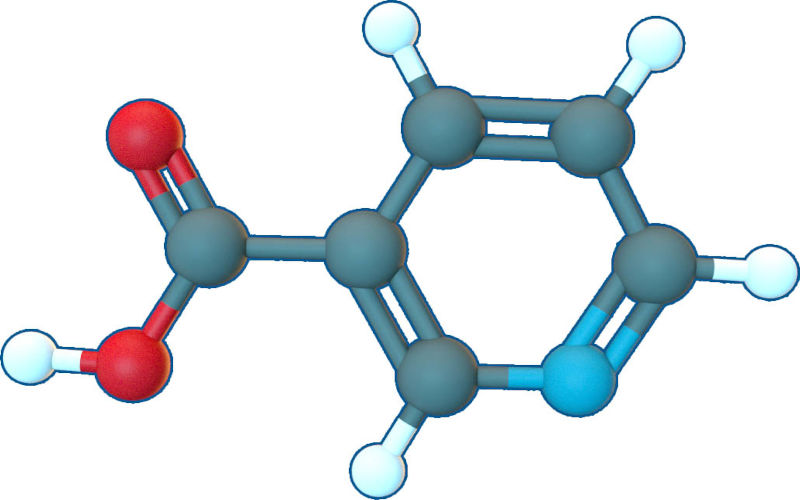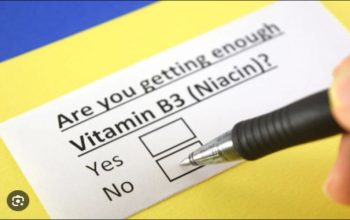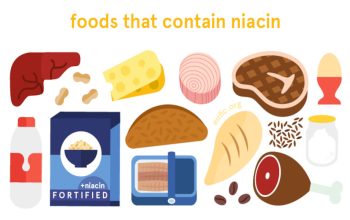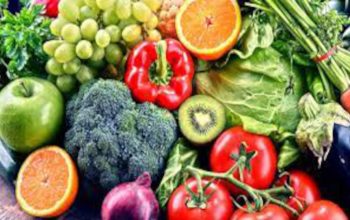Niacin Part 2: The Flush and Lowering Cholesterol
Meagan Purdy, ND interviews Dr Michael Joseph, DFM, PhD, MS on the historical and present-day use of niacin and how it supports multiple biochemical processes, including mental health functions.
Here is a link to Part 1.
Interview with Michael Joseph, DFM, PHD, MS, PART 2
Meagan: Can you tell me a bit about the niacin flush? I know that can deter some people from taking niacin, particularly at physiologic dosages.
Dr Joseph: Prior to this interview, I took about 750 mg of pure niacin with 1,000mg of niacinamide, so I’m currently flushing a bit. The flushing mechanism is something that’s grossly misunderstood. The niacin flush is really just a form of vasodilation. The niacin itself works on the vascular system. It goes to the blood vessels and capillaries and widens them, allowing blood flow to improve. i It’s the equivalent of putting in another lane on a highway. Therefore, it has such a profound impact on cholesterol because it allows the red blood cells to transport LDL to the liver more effectively. ii It’s not so much that it works chemically on cholesterol; niacin works mechanically on cholesterol levels by allowing for more efficient transport to the liver for processing. This is why niacin supplementation is a safe and highly effective way to normalize cholesterol levels, and we can surmise that high cholesterol may in fact be the result of niacin deficiency.
There’s a phenomenon called “red blood cell sludging,” where red blood cells can bunch up in the capillaries. When we take niacin, these capillaries are widened enough so that the blood cells can move about more efficiently. iii This also allows the body to transport nutrients or remove toxins more effectively. That’s the crux of the flush and why some people will get warm or a little itchy. It’s from the capillaries opening and allowing for a greater exchange of chemicals through the blood, and likely due to the release of histamine. There’s more blood flow, so we’ll see a rise in the temperature of the skin—though if you were to stick a thermometer in your mouth, you’d see no change in systemic temperature.iv Bear in mind that the flush occurs only with pure nicotinic acid (niacin) and not with niacinamide.
Another interesting thing about the niacin flush—I learned this from a mentor, Dr. Kurt Woeller—is that there is lipolysis that happens during the niacin flush where fatty tissue is broken down and toxins stored in these fat cells are released. v Because of this, some of the symptoms of the niacin flush could be attributed to the detoxification process. This phenomenon is why niacin is being used in some treatment centers for addiction. They’re using niacin protocols in addition to saunas to help speed up detoxification and aid people in recovery from addiction, and they sometimes see rapid results. vi
Meagan: So many healthcare practitioners simply associate niacin supplementation with cholesterol management because many are under the impression that pellagra is a disease of the past. Would you agree with that?
Dr Joseph: I vehemently disagree. If pellagra was a thing of the past, people wouldn’t be demonstrating symptoms of pellagra now. It was an incredible stroke of genius and/or luck when, during World War II, the U.S. government mandated that refined flours had to be supplemented with thiamine, riboflavin, and niacin. They did this because it helped the war effort. Pellagra was such a serious wartime disease that more soldiers died from pellagra than gunshot wounds during the U.S. Civil War. For the earlier part of the 20th century, pellagra was the fourth-leading killer in the U.S. and the leading killer in the U.S. South. It was absolutely devastating. It wasn’t until the discovery of vitamin B3 that scientists started connecting pellagra and B3 deficiency. Following this discovery, the government led a health initiative to add nutrients to flour. This effectively ended acute beriberi (thiamine deficiency) and acute pellagra in wartime. However, it didn’t completely end pellagra in society.
Humans are always going to be battling pellagra in some form. It takes approximately 60 mg of tryptophan to make 1 mg of niacin. vii Humans are absolutely abysmal nutrient converters. Being higher in the food chain means that you must consume more “lower” organisms in the food chain to get the nutrients you need. For example, trees convert all their nutrients from soil, water, and sunlight. Then animals eat those trees for the nutrients that they can’t convert and assimilate on their own. Vitamin B3 happens to be one of the nutrients that we can make, but only in such small amounts that it’s not necessarily beneficial. We must get most of our vitamin B3 from our diet or consume it in some way. Unfortunately, it’s very difficult to consume optimal amounts of vitamin B3 through the diet. I believe pellagra still exists in such a way where it’s just as deadly today as it was years ago; it just shows up in different ways.
End PART 2
Stay tuned to Druglessfunctionalmedicine.com for Parts 3!
i Kamanna VS, et al. The mechanism and mitigation of niacin-induced flushing.Int J Clin Pract. 2009;63(9):1369-77.
ii Kamanna VS, Kashyap ML. Mechanism of action of niacin.Am J Cardiol. 2008;101(8A):20B-26B.
iii Benhalima K, Muls E. Niacin, an old drug with new perspectives for the management of dyslipidaemia.Acta Clin Belg. 2010;65(1):23-8.
iv Nilsson BM, et al. Niacin skin-flush response and electrodermal activity in patients with schizophrenia and healthy controls.Prostaglandins Leukot Essent Fatty Acids. 2006;74(5):339-46.
v Kamanna VS, et al. Recent advances in niacin and lipid metabolism.Curr Opin Lipidol. 2013;24(3):239-45.
vi Prousky JE. The treatment of alcoholism with vitamin B3. JOM. 2014;29(3):123-31.
vii National Institute of Diabetes and Digestive and Kidney Diseases. Vitamins. In:LiverTox: Clinical and Research Information on Drug-Induced Liver Injury. Bethesda (MD): National Institute of Diabetes and Digestive and Kidney Diseases; 2021.




